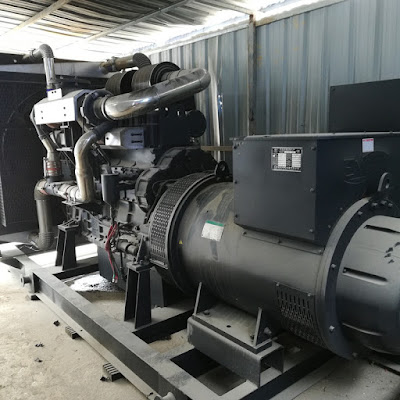The control of generator stator voltage is
realized by adjusting the magnitude of rotor excitation current. The excitation
corresponding to the amount of electricity generated is normal excitation. When
the stator operating voltage is higher than the rated voltage, it is called
overexcitation. Conversely, the stator operating voltage below the rated
voltage is called underexcitation. In practice, there is a definite positive
and negative value above or below the rated voltage. Different generators have
different excitation control system and different excitation values.
Generators
and transformers are composed of iron core windings. If the applied voltage of
windings is U, the turn number is W, the cross section of iron core is S, and
the magnetic density is B, then U = 4.44fWBS. Because W and S is definite
number, so it is written in B=KU/f, K=1./4.44WS, for each particular generator
or transformer, K is a definite number. We can know from B=KU/f: the increase
of voltage and the decrease of frequency can lead to the increase of magnetic
density B.
For
diesel generator, when overexcitation multiple number
n=B/BN=(U/UN)/(f/fN)=U*/f* is less than 1, it will cause damage by
overexcitation. It is mainly manifested in the increase of leakage magnetic
field in the back of stator core of generator, the induction of electric
potential in the positioning bar of stator core, and the closed loop formed by
stator core, which flows through the current. It not only causes serious
overheating, but also may cause spark discharge at the contact surface between
positioning bar and stator core, which is very disadvantageous to
hydrogen-cooled generating sets.
When
operating diesel power generators, the reasons for overexcitation maybe as
follows:
1.Before
the generator is parallel to the system, the excitation is caused by the
incorrect increase of the excitation current due to the wrong operation. For
example, misjudgement is caused by TV disconnection of generator.
2.During
the start-up of the generator, the generator accompanies the low-speed heater
of the steam turbine rotor. If the voltage is raised to the rated value by
mistake, the overexcitation will be caused by the low-frequency operation of
the generator.
3.During
shutdown diesel generator set, main valve closed, outlet circuit breaker
disconnected, and demagnetization circuit breaker refused to move. At this
time, the speed of steam turbine decreases, the automatic excitation regulator
strives to keep the terminal voltage equal to the rated value, so that the generator
is subjected to overexcitation.
4.When
the generator outlet circuit breaker trips, if the automatic excitation
regulator operates manually failure or fails automatically, the voltage and
frequency will increase, but the generator overexcitation will be caused by the
slow increase of frequency.
5.If
the generator does not reduce excitation in time during load rejection, the
overvoltage will occur; even if the terminal voltage can maintain the previous
value in the generator-transformer mode, the overvoltage will occur because the
transformer is no-load.
If
the allowable overexcitation multiple number of diesel generator is lower than
that of transformer, it will be more vulnerable to the harm of overexcitation.
Therefore, large diesel generators need to be equipped with overexcitation
protection with perfect performance. For the generator set with circuit breaker
installed at the generator outlet, in order to protect the generator and
transformer under various operation modes, the overexcitation protection of the
generator and transformer should be set separately.
Overexcitation
protection should be adjusted according to the overexcitation curve provided by
generator manufacturer under full load condition, the setting principle is to
make the excitation curve of the adjusted excitation protection relay below the
generator overexcitation curve as far as possible. That is to say, when the
diesel generators operates under overexcitation conditions, the excitation
protection relay should be able to reliably jump off the circuit breakers on
each side of the main transformer in a shorter time than it can withstand. At
the same time, generators should have a certain level of excitation resistance
under ensuring normal operation, so start-up value of excitation protection
relay is generally set to slightly greater than the normal maximum operating
value.

Comments
Post a Comment